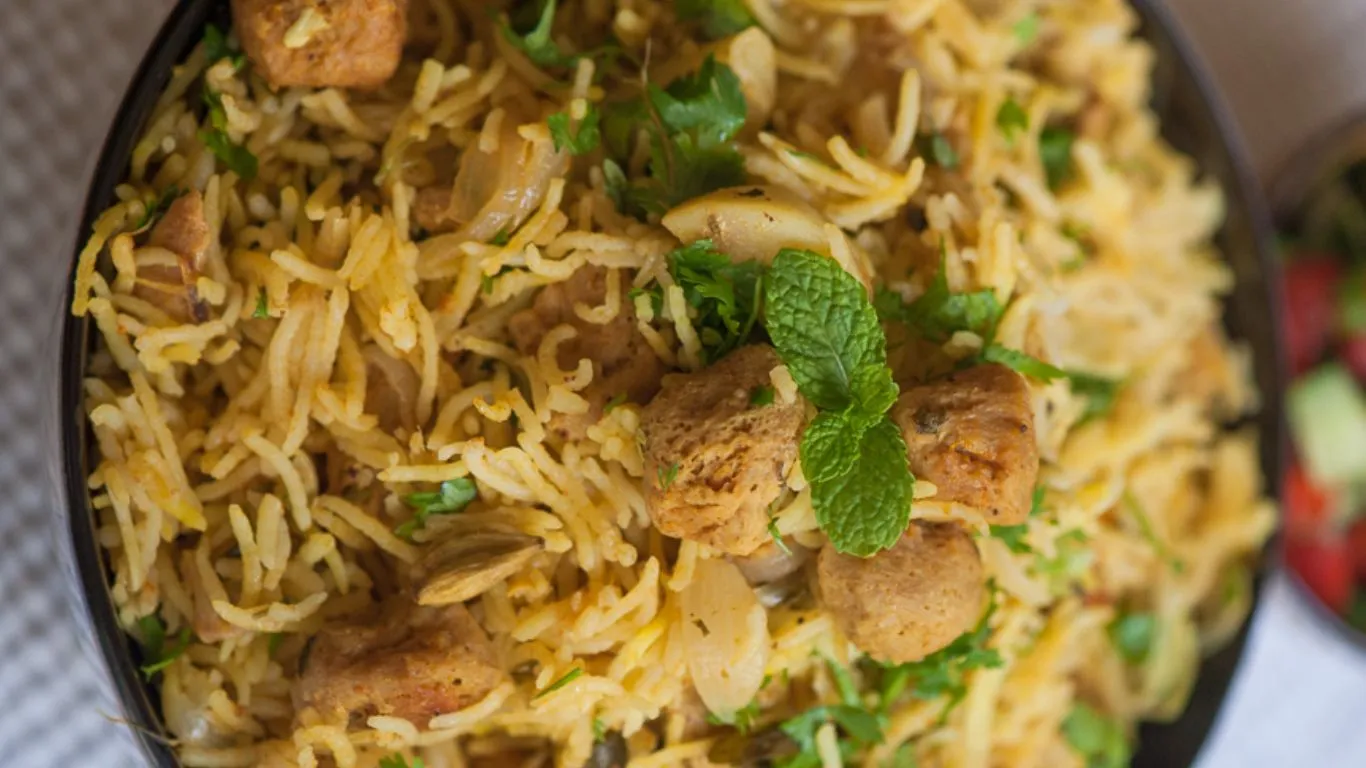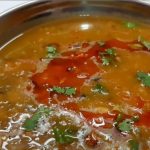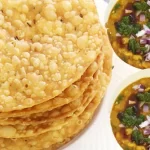Sindhi Bhugal Chawal is a fragrant and savoury rice dish from the Sindhi ethnicity. Let’s go over the traditional recipe and cooking methods for making Sindhi Bhugal Chawal at home. Follow these simple steps to make a tasty and filling supper.
Sindhi Bhuga Chawal Recipe is a Sindhi delicacy in which rice is prepared with entire spices and caramelised onions sautéed till they turn a wonderful dark brown hue. ‘Bhuga’ means ‘cook until brown’ in Sindhi, which is how this rice preparation got its name.
Origins & History
Sindhi Bhugal Chawal recepie has its roots from Sindh province which is now in Pakistan. The dish very much connects with Indus (Sindhu) Valley Civilization; abode of Sindhi Community.
Over the years and travelling through geographies, Bhugal rice has seen many variations. However, the craze and carving for Sindhi Bhugal rice has never come down. This dish is not just favorite of Sindhis but also is very popular amongst Non-Sindhi communities across the world.
This Sindhi Bhuga Chawal Recipe is traditionally served with Sindhi Sai Bhaji.
Cooking & Serving
Preparation Time:
15 mins
Cooking Time:
30 mins
Serves:
4 People
Key Ingredients
- Sindhi Bhugal Rice:
- 1 cup basmati rice
- 2 tbsp. olive oil or ghee (clarified butter)
- 1 tsp. cumin seeds
- 1 or 2 bay leaves
- 2 to 3 cloves
- 2-3 cardamom pods, green
- 1 crushed black cardamom
- 5-6 black peppercorns, whole
- 1 cinnamon stick, 1 inch
- 1 finely chopped onion
- 1 tsp ginger and garlic paste
- 2 slit green chilies
- 1/2 cup mixed vegetables (e.g., peas, carrots)
- 1 tablespoon turmeric powder
- 1/2 teaspoon cayenne pepper
- Salt to taste
- Fresh coriander leaves for garnish
Recipe: Step-by-Step Preparation
- Rinse the basmati rice completely and soak it for about 30 minutes in water. Drain and set aside the rice.
- In a big pan or wok, heat the oil or ghee over medium heat.
- To the boiling oil, add the cumin seeds, cloves, cardamom pods, and cinnamon stick. Sauté them till their aromatic flavours emerge.
- Sauté the sliced onions in the skillet until they are transparent and golden brown.
- Once the onions have reached a dark brown colour, add the green chilli, red chilli powder, garam masala, and salt. 2 cups of water, plus the soaked and rinsed rice
- Sprinkle the rice with turmeric powder, red chilli powder, and salt. Mix well to thoroughly distribute the spices.
- Cook the Bhugal Chawal for about 15-20 minutes, or until the rice is fully cooked and fluffy, covered with a tight-fitting lid.
- When the Bhugal Chawal is done, remove the lid and gently fluff the rice with a fork.
- Garnish with fresh coriander leaves, if desired.
- Serve the fragrant Sindhi Bhugal Chawal hot with raita, papad, or pickles as an accompaniment.
Serving
- Sindhi Bhugal Chawal has seen numerous changes around the world due to geography and tradition.
- Some people include ginger-garlic paste and veggies.
- Lotus seeds are also used in the Sindh region, which is now part of Pakistan.
- In Gujarat, you may find sweet and tangy ingredients like jaggery (gur) or tamarind pulp, lending a unique flavor profile that balances the spiciness.
Tips
- Sindhi Papad must go along with the meal.
- A great combination with Sindhi Bhugal Raice is Sindhi Sai Bhaji which is very common in Sindhi homes.
- And do not forget to have home salad and prepared pickle.
- Avoid black pepper.
Nutritional Benefits of Sindhi Tridali Dal
- Carbohydrates: Rice, the main component of Bhugal Chawal, has a substantial amount of carbohydrates. Carbohydrates are an important source of energy for the body.
- While the protein level of Bhugal Chawal is moderate, it does contribute to the overall nutritional profile. Protein is required for many body activities, such as muscular growth and tissue repair.
- Fibre: Bhugal Chawal may contain dietary fibre depending on the type of rice used and the added seasonings. Fibre assists digestion, promotes bowel regularity, and promotes overall gut health.
- Minerals and vitamins: Depending on the spices, herbs, and vegetables used in the dish, Bhugal Chawal can contain trace levels of vitamins and minerals. These include B vitamins, iron, potassium, and magnesium, all of which are essential for overall health and well-being.
- Low Fat Content: When made with less oil or ghee, bhugal chawal can be quite low in fat. This makes it a good option for people who want to limit their fat intake.





